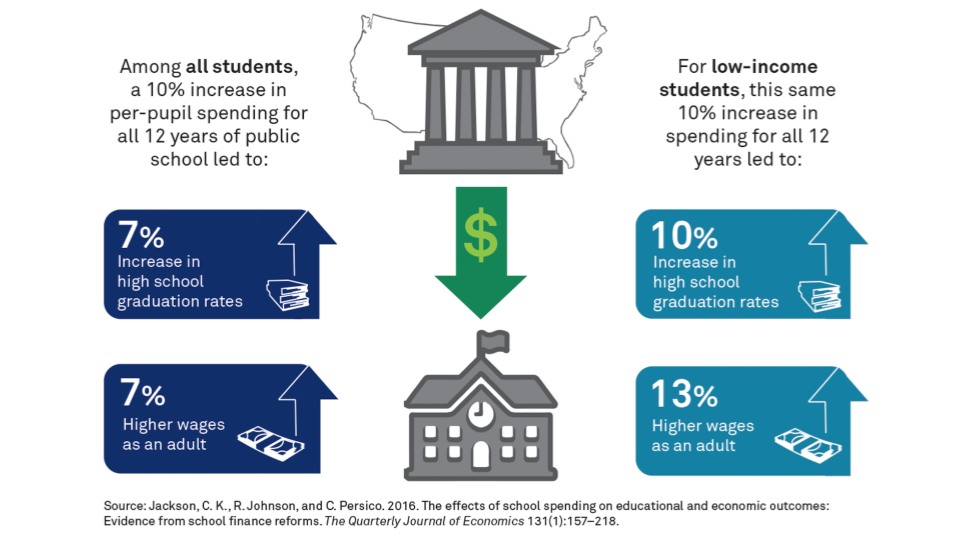It is worth noting that Colorado is recognized as a national leader in educational return on investment. In fact, the U.S. Chamber of Commerce rated Colorado second in the nation for educational ROI in 2014. Of course, efficiency is not the same as sufficiency. That is, the dollars Colorado spends may be used particularly well, but at more than $2,500 below the national average in per pupil funding, those efficiently spent dollars are not enough to ensure that all students graduate ready for career and/or college. The same U.S. Chamber of Commerce study ranks Colorado 6th in overall academic achievement; notably, every state that ranks above Colorado spends more per pupil than Colorado. Also of importance: the Chamber study ranks Colorado 21st in academic achievement of low-income students, indicating a larger poverty achievement gap than other states.
With that as a backdrop, it’s worth considering some studies in recent years that have shed light on the long-term impact of increased funding on academic and lifetime outcomes – in particular for low-income students. For instance:
- The Effects of School Spending on Educational and Economic Outcomes: Evidence from School Finance Reforms. The results of this study were summarized by the Northwestern Institute for Policy Research with this infographic:
- This additional study, School Finance Reform and the Distribution of Student Achievement, published by the National Bureau of Economic Research in July 2016, was conducted by the economists Julien Lafortune and Jesse Rothstein of the University of California at Berkeley and Diane Whitmore Schanzenbach of Northwestern and it found that money really does matter in education. (New York Times article, It Turns Out Spending More Probably Does Improve Education)
In addition, there is significant evidence that specific interventions such as quality early childhood education, increased teacher salaries, summer school, professional development and well-integrated technology, which all require additional funding, have been shown to have a positive impact on student achievement.

